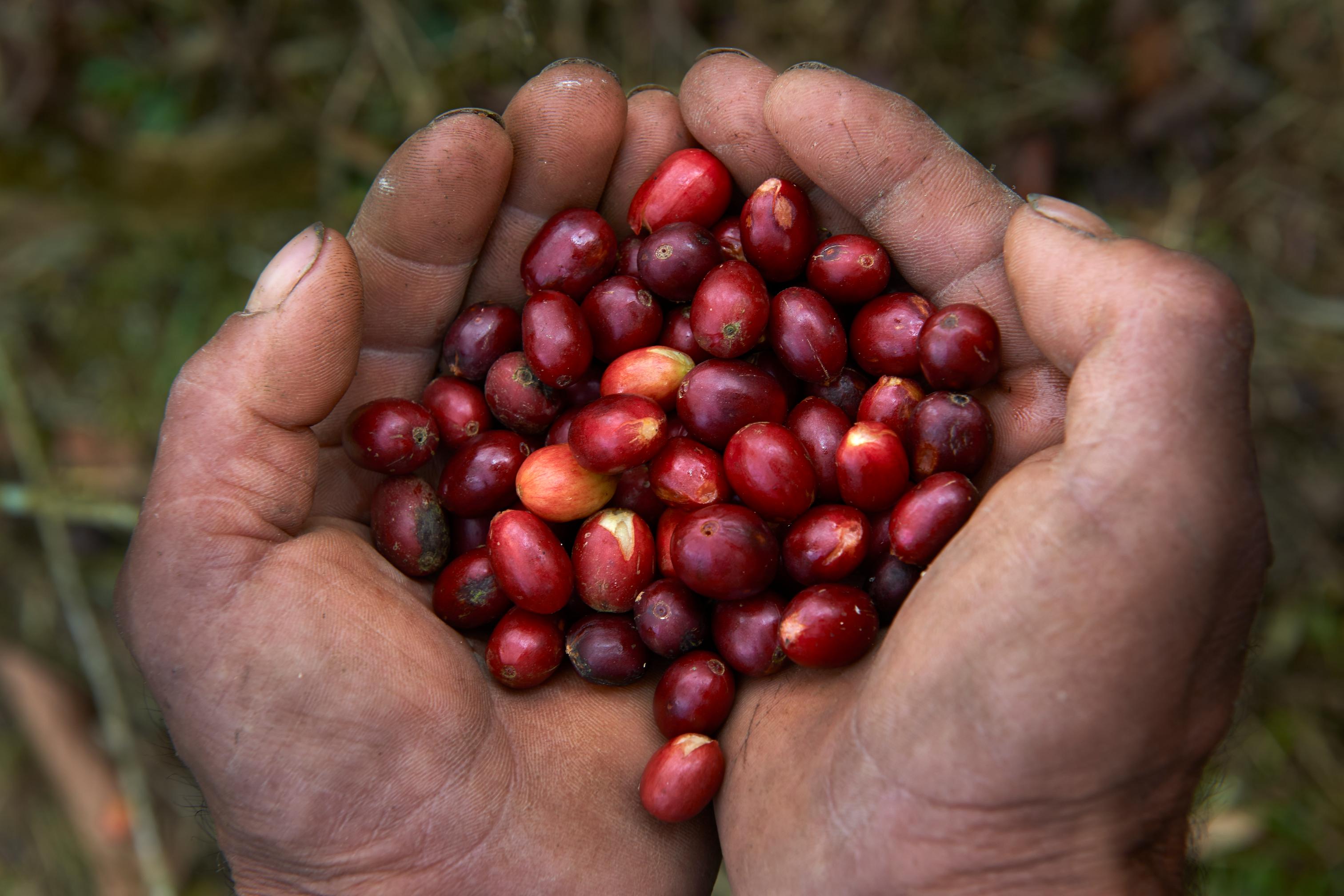For two decades, Conservation International has worked with Starbucks to support responsible coffee farming, protect biodiversity and reduce the coffee industry’s impacts on climate through ethical sourcing standards known as the Coffee and Farmer Equity (C.A.F.E) Practices.
Conservation News sat down with Raina Lang, who leads Conservation International’s sustainable coffee program, to discuss a new report that highlights the progress and opportunities ahead.
Conservation News: Set the scene for us, where do these ethical sourcing standards come from?
Raina Lang: Roughly 125 million people — from farmers to roasters to baristas — rely on the coffee economy for their livelihoods. It’s an important and complex global market that stretches across the tropics — and at times has unfortunately grappled with concerning practices like deforestation and the exploitation of workers.
To help improve the supply chain, Conservation International teamed up with Starbucks in 2004 to create a verification program that holds coffee farmers to economic, social and environmental standards, known as the C.A.F.E Practices. This includes a range of practices, like preventing the use of harmful pesticides, ensuring workers are treated fairly and the establishment of buffer zones around waterways to protect water sources from contamination. In return, participating farmers have access to a global market to sell their coffee.
How many farms are participating?
RL: More than 465,000 farms across 33 countries were participating in the program in 2021 — that’s a 15 percent increase since 2017. Collectively, they own 1.1 million hectares (2.7 million acres) of coffee area — meaning that roughly 10 percent of all the coffee-producing land in the world is managed by farmers using verified C.A.F.E practices that avoid forest loss, protect biodiversity and promote workers’ rights.
Every few years, Conservation International releases a report to review where participating farms are in meeting these standards — and to identify emerging trends, as well as areas for improvement.
What did the report find?
RL: One thing that stood out is that since 2004, 99.9 percent of the farms participating in C.A.F.E Practices have not converted forest areas into coffee production. As temperatures rise and areas suitable for coffee shift, deforestation is a growing concern for coffee production. The fact that farmers who own 10 percent of the total coffee growing area worldwide are committed to keeping their forests standing is really promising.
Why is deforestation an issue with coffee production?
RL: Climate change is raising temperatures and altering rainfall patterns — which means the areas that are suitable for growing coffee could shrink by half within three decades. At the same time, experts say demand for coffee could triple. Increasingly, as the coffee industry tries to keep up with that demand, areas that are suited for coffee growing are competing with standing forests.
To avoid expansion into forests, there is an urgent need to focus on sustainable coffee production that increases productivity and resilience to climate change on existing farms. An analysis from Conservation International experts found that if coffee production increases on existing lands rather than expanding deeper into forests, it could secure over 1.5 gigatons of carbon — equivalent to taking more than 300 million cars off the road for a year — through avoided emissions and storage.
Any other key findings from the report?
RL: Yes. While we’ve come a long way in improving coffee farming with C.A.F.E. Practices, more can be done to prepare for climate change. In coffee growing areas, challenges will mainly come from rising temperatures and dramatic swings in rainfall, leading to periods of drought and flooding. Farmers everywhere have been feeling these impacts for some time; it's critical that we help them become more resilient to climate change.
What does that look like?
RL: There are several ways. For example, to protect from rising temperatures, farmers can grow their crops under a canopy of taller shade trees, which help regulate the temperature and promote growth, while also providing habitats for native wildlife and storing carbon. As for concerns about fluctuating amounts of rainfall, farmers should take steps to conserve water and protect soil from erosion. Coffee, which is predominantly grown on steep hills, is more susceptible to soil erosion from heavy rainfall, which can also lead to sedimentation of waterways. Practices such as including ground cover crops on slopes can reduce erosion during extreme weather events.
Processing coffee is also water intensive. Estimates vary, but it takes an average of 39 gallons of water to produce one cup of coffee — and if untreated, the wastewater can contaminate rivers and streams. Though costly, upgrading existing processing equipment by using eco-friendly technologies can reduce water use and limit wastewater.
These, and other climate smart actions, are encouraged in C.A.F.E. Practices; however, they require investment, knowledge and time to put them into practice. Ultimately, by combining resources, expertise and influence, companies like Starbucks can play a significant role in building resilience in coffee communities. Protecting nature and helping farmers prepare for climate change is an investment in the future of coffee.
Further reading:
Mary Kate McCoy is a staff writer at Conservation International. Want to read more stories like this? Sign up for email updates. Also, please consider supporting our critical work.
